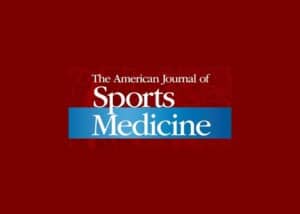
The Latarjet procedure, which was first described in 1954, has emerged as a common surgical option for recurrent anterior shoulder instability with positive clinical outcomes. Typically, the Latarjet procedure is indicated when anterior glenoid bone loss reaches 20% to 25% because this has been reported to be the critical amount of bone loss for which isolated Bankart repair would not suffice to restore anterior shoulder stability in biomechanical studies. However, the rates of complications after open coracoid transfer procedures range from 15% to 30%,4,13,20 with reported neurovascular injuries in 1.8% of cases. Of these, the musculocutaneous nerve (MCN), axillary nerve, and axillary artery are most commonly injured (0.6%, 0.3%, and 0.3%, respectively). In a series of 34 patients, Delaney also reported that 20% had a transient clinically detectable nerve deficit (all axillary nerve) after the Latarjet procedure, while 77% of patients had a nerve alert while using neuromonitoring intraoperatively.
The relevant anatomic landmarks for the Latarjet procedure or other anterior approaches to the shoulder joint have been described, with the majority focusing on the anatomy of the MCN before surgical intervention. In addition, to the best of the authors’ knowledge, one study measured the preoperative and postoperative relationship of the MCN to the coracoid process after the Latarjet procedure, while another measured the axillary nerve, axillary artery, and MCN after the Latarjet procedure in relation to the glenoid.10 Thus, there is a paucity of quantitative descriptions of the distances of relevant neurovascular structures to pertinent landmarks in the native state and how these distances change in relation to the coracoid and glenoid after an open Latarjet procedure. Quantification of the distances of these structures to the coracoid and glenoid may help to decrease complications during primary or revision Latarjet procedures by providing a minimum safe distance for surgical dissection.
Many surgeons advocate performing neurolysis of the MCN to allow for further mobilization of the nerve and thereby diminish the neurovascular risks when performing a coracoid transfer procedure. Therefore, the purpose of this study was to define the neurovascular anatomy of the shoulder in the native state and after the Latarjet procedure with and without neurolysis of the MCN. Our first hypothesis was that there would be consistent and reproducible distances to identify the important neurovascular structures for the native and postoperative shoulders. In addition, we hypothesized that there would be no difference in the position of the MCN with and without neurolysis.
Full Article: Changes in the Neurovascular Anatomy of the Shoulder After an Open Latarjet Procedure
